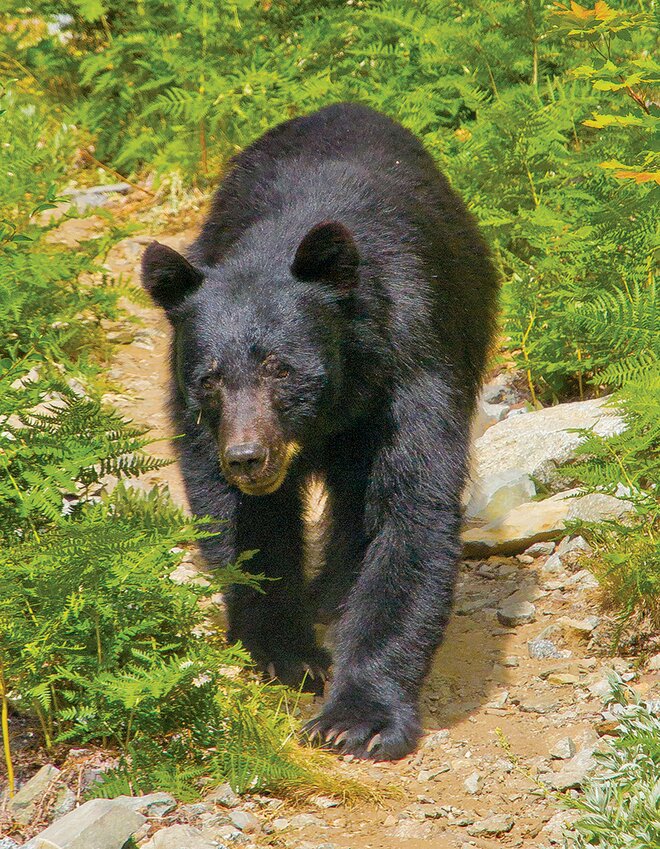 Andy Porter photo from file
Andy Porter photo from fileA man jogging on a trail north of Lake Whatcom was attacked by a black bear August 3. According to a Washington Department of Fish and Wildlife (WDFW) press release, the jogger sustained non-life-threatening injuries, and the bear was killed later that evening.
WDFW received a report around 8:30 a.m. August 3 of a human-black bear incident that occurred near Y Road Trail to Stewart Mountain north of Lake Whatcom. According to WDFW, the man involved sustained multiple injuries to his hands and feet. He was taken to an area hospital for medical treatment and released later that afternoon.
“We are extremely thankful that the victim is recovering and receiving medical care from this unfortunate encounter,” said captain Jennifer Maurstad, WDFW Police North Puget Sound. “He did everything right during the incident and we wish him a speedy recovery. Wild animal encounters are unpredictable but, in most cases, they wish to avoid conflict as much as we do.”?
WDFW officers lethally removed an adult black bear in the evening of August 3 near where the incident occurred, according to the August 4 press release. Officers used Karelian bear dogs to locate the bear.
Whatcom County game warden David Jones said WDFW is attempting to trap what is believed to be the bear’s two cubs. WDFW received multiple reports in recent weeks of a sow with two cubs in the area.
Jones said the bear that was killed was a 5- to 6-year-old sow between 200 and 225 pounds. He said, unfortunately, it’s standard protocol to euthanize a bear after an incident with a human.
WDFW policy on response to dangerous wildlife complaints states a WDFW enforcement officer must respond immediately to any cougar or black bear attack on a human to euthanize the offending animal and submit tissue samples for rabies testing.
This was the first he’s been involved in during his 15plus years working in Whatcom County, Jones said.
The only fatal black bear attack recorded in Washington state was in 1974, the release said. State authorities have recorded 18 encounters that resulted in human injuries since 1970. The last was in 2015.
The bears were staying in an area off of Y Road that had strewn garbage, which he said was a food source for them. He said the best thing people can do to prevent future encounters is keeping their property and surrounding areas clean. Make sure garbage and food waste is secured in its respective bin and pick up any strewn waste.
“Keep stuff clean; run a tight ship,” Jones said. “All it takes is a couple of people not keeping their area tidy.”
In general bears avoid people, but they’re naturally curious animals. If a bear walks toward you, WDFW officials recommend identifying yourself as a human by standing up, waving your hands above your head and talking in a low voice. Back away, avoid, direct eye contact, and don’t run from a bear.
WDFW recommends making noise and leashing pets while hiking. Be aware of your surroundings as to not accidentally startle a bear. While recreating, WDFW recommends carrying bear spray that is readily accessible and knowing how to use it. More information on how to use bear spray is available on WDFW's blog.
This story was updated August 5 to include game warden David Jones comments.